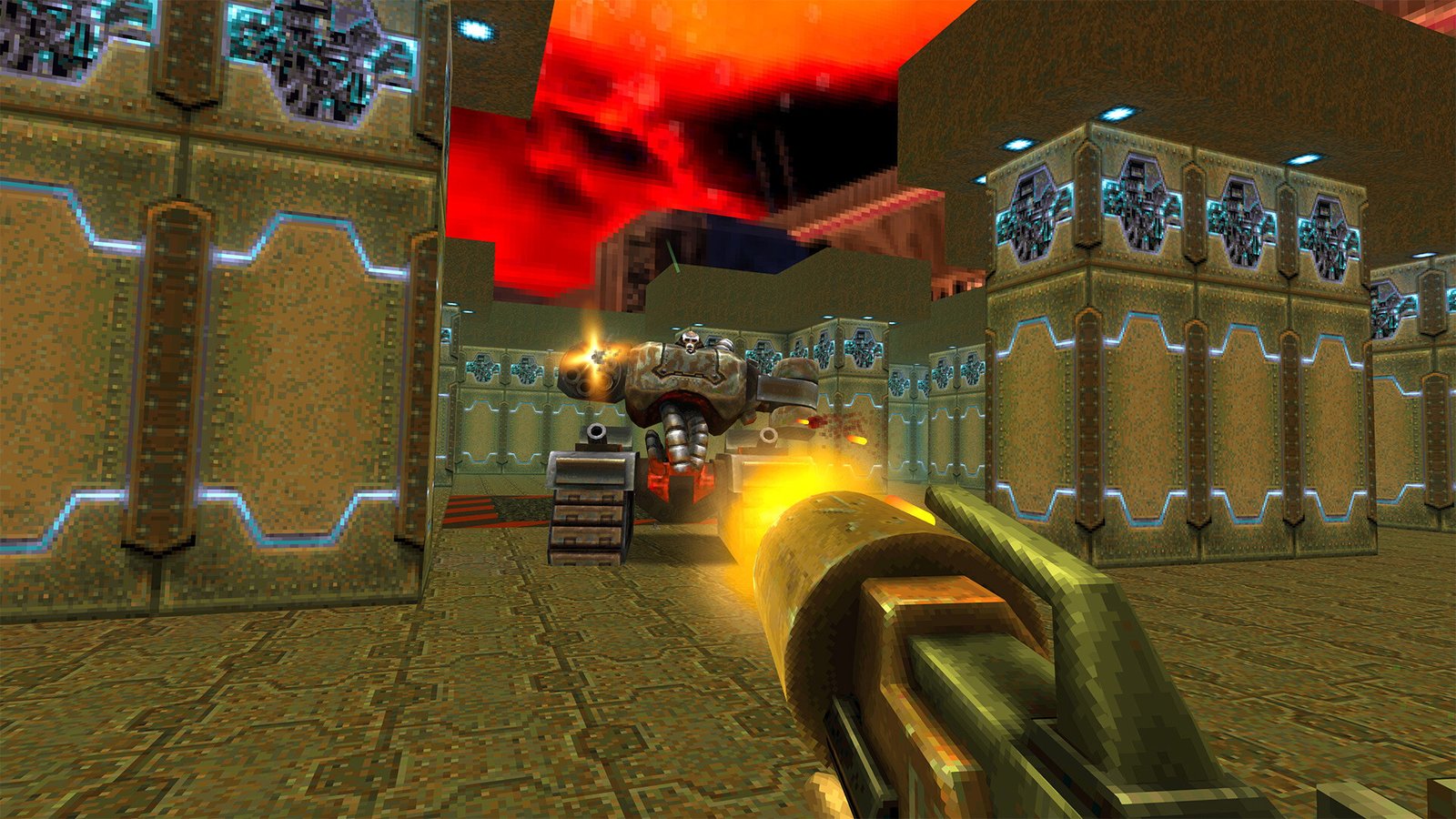Microsoft made the bold move into nostalgia and next-generation tech by unleashing a demo of AI-created Quake II. As exciting as this initiative was to technology enthusiasts and veterans alike, the firm moved rapidly to caution about its boundaries. The demo isn’t so much a play-for-real remake but an exploratory demo demonstrating the application of generative AI in reproducing the environments within a game, although with clear limits.
A Peek into the Past, Reproduced by AI
Quake II, released in 1997, is a gaming milestone in its innovative 3D engine and first-person shooter action. Microsoft’s AI-generated equivalent, however, isn’t trying to recreate the original experience in every detail. Instead, it is offering an interpretation of the game in terms of machine learning models on top of existing gameplay footage. The output is more of a visual reinterpretation than a real game, offering viewers a surreal, dreamlike reconstruction of familiar environments.
Instead of reimplementing the game from scratch based on its code, the AI “watched” the original game and attempted to create what it thought a playable version would look like. The outcome is visually fascinating but technologically limiting. Think of it similar to an AI-created video walkthrough with minimal interactivity, something more akin to a video experience than a game that you can jump into based on keyboard and mouse.
How The Demo Was Made
Microsoft employed state-of-the-art generative AI models, including diffusion networks and vision transformers, that were trained on hours of Quake II gameplay. The models traversed thousands of frames and then attempted to replicate the look and design of the original levels. No real game logic, collision detection, or real-time physics is involved; merely AI-generated frames reacting to simple user movement inputs.
This method may seem unexciting to game players accustomed to real-time graphics and smooth control, but as a technological phenomenon, it’s an interesting spectacle. It’s a testament to AI’s expanding ability to read spatial worlds and simulate them as visuals, though it still comes up short where interactivity and depth of game are concerned.
The Catch: Microsoft Admits the Limitations
In a refreshing break from the usual hype, Microsoft did not hype the demo. The company was frank about what the AI can and cannot do. They explained that the demo is a “visual simulation” and not a real interactive experience. For example, enemies are not rational, there is no physics, and the player cannot interact with the world except to travel around within it.
These constraints are not merely technical idiosyncrasies; they are a reflection of the state of affairs at the moment with AI in the realm of interactive dynamic content. While AI can simulate appearance and movement, it cannot presently recognize gameplay rules, goals, plus feedback loops from the player, all of which are critical to a playable game.
Why This Still Matters
Faulty as it is, this AI-generated Quake II demo represents an important juncture in game and AI convergence. It has potential for use in applications such as AI-aided level design, autonomous testing, or rapid prototyping for small independent developers. AI is not yet on the verge of creating complete games by itself, but it is being developed more and more as a trusted co-pilot in the game development process.
This also suggests Microsoft’s wider ambitions in bringing generative AI across its platforms. From Copilot in Microsoft Office to AI-assisted coding with GitHub Copilot, this Quake II demo is a proof of concept in one more area: that of digital entertainment and gaming.
Final Verdict
Microsoft’s AI-generated Quake II demo is not a game but a conversation starter. It’s a peek at what AI might do one day, and an honest look at what it can’t do yet. By showing its limits, Microsoft is believable while experimenting in a manner that inspires wonder rather than scorn.
For developers, researchers, and technology-advanced gamers, this demo is a preview of the AI-driven future not yet ready to play, but ready to think.



